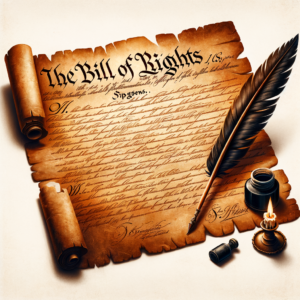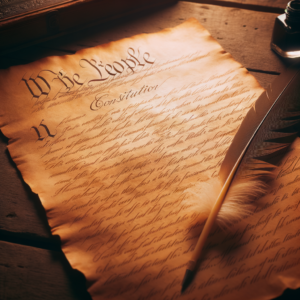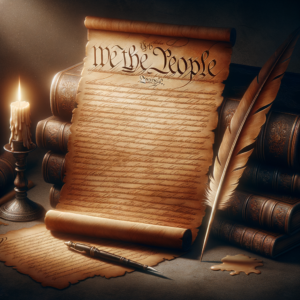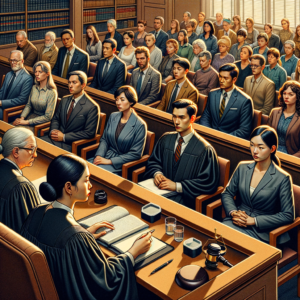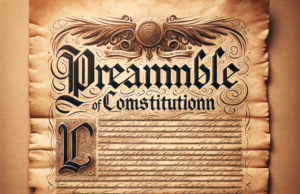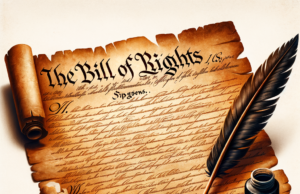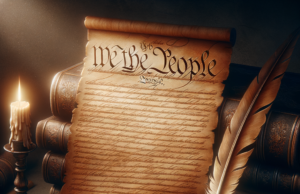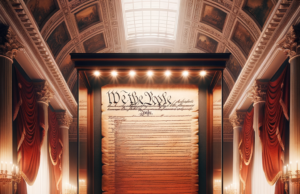Unveiling the Shocking Truth: State Constitution Changes That Transform Governance

In recent years, the landscape of American governance has been significantly reshaped by changes to state constitutions. These modifications, often overlooked in the broader discourse on federal policy, play a crucial role in determining how power is distributed, how laws are enacted, and how citizens engage with their government. As states grapple with contemporary challenges, the amendments to their constitutions reveal a transformative potential that can redefine governance at the local and state levels. This article delves into the importance of state constitutions, historical changes, recent amendments, their impacts on communities, successful case studies, and the future implications for American democracy.
Understanding the Importance of State Constitutions in Governance Reform
State constitutions serve as the foundational legal documents that outline the structure, powers, and limitations of state governments. They establish the framework for governance, delineating the responsibilities of various branches of government and ensuring the protection of individual rights. In an era where citizens increasingly demand transparency, accountability, and responsiveness from their governments, state constitutions have emerged as vital instruments for reform. They provide mechanisms for direct democracy, such as ballot initiatives and referendums, allowing citizens to influence legislation directly. Furthermore, state constitutions can serve as a bulwark against federal overreach, empowering states to tailor their governance to the unique needs and values of their populations.
Historical Context: Key Changes in State Constitutions Over the Decades
The evolution of state constitutions reflects broader societal changes and the shifting dynamics of power within the United States. Since the founding of the nation, state constitutions have undergone numerous revisions, often in response to political upheaval, social movements, and economic crises. The Progressive Era of the early 20th century, for example, saw a wave of amendments aimed at curbing corruption and increasing democratic participation. Similarly, the civil rights movement prompted significant changes to ensure equal protection under the law. More recently, issues such as environmental protection, healthcare access, and criminal justice reform have driven states to revise their constitutions, highlighting the adaptability of these documents to contemporary challenges.
Analyzing Recent Amendments: What They Mean for State Governance
Recent amendments to state constitutions have introduced significant changes that reflect evolving public priorities. For instance, several states have amended their constitutions to include provisions for voting rights, campaign finance reform, and the legalization of marijuana. These changes not only address pressing social issues but also signal a shift towards more progressive governance models. Additionally, some states have adopted measures to enhance transparency and accountability in government operations, such as requiring independent audits and establishing ethics commissions. These amendments demonstrate a growing recognition of the need for governance that is not only effective but also reflective of the will of the people.
The Impact of State Constitution Changes on Local Communities and Citizens
The ramifications of state constitutional changes extend deeply into local communities, influencing everything from education funding to public health initiatives. By empowering local governments with greater autonomy, amendments can lead to more tailored solutions that address specific community needs. For example, states that have adopted constitutional amendments to support local control over education have seen increased investment in public schools and innovative curriculum development. Moreover, changes that enhance voting rights and accessibility have resulted in higher voter turnout and greater civic engagement, fostering a more informed and active citizenry. Ultimately, these amendments can lead to a more equitable distribution of resources and opportunities within communities.
Case Studies: States That Successfully Transformed Governance Through Amendments
Several states have successfully transformed their governance structures through constitutional amendments, serving as models for others. California’s Proposition 13, passed in 1978, fundamentally altered property tax assessments, providing significant relief to homeowners while also prompting discussions about funding for public services. Similarly, Colorado’s Amendment 64, which legalized recreational marijuana, not only generated substantial tax revenue but also shifted public perceptions about drug policy. In Massachusetts, the adoption of a constitutional amendment to ensure universal healthcare access has sparked a national conversation about healthcare reform. These case studies illustrate how strategic amendments can lead to meaningful governance changes that resonate with citizens’ needs and aspirations.
Future Implications: How Ongoing Changes May Shape American Democracy
As states continue to amend their constitutions, the implications for American democracy are profound. The trend towards greater direct democracy, characterized by ballot initiatives and referendums, may empower citizens to take a more active role in shaping policy outcomes. However, this shift also raises questions about the potential for populism to overshadow deliberative governance. Additionally, as states experiment with innovative governance models, there is the possibility of creating a patchwork of laws that may complicate interstate relations and federal oversight. The ongoing evolution of state constitutions will undoubtedly influence the trajectory of American democracy, necessitating careful consideration of the balance between state autonomy and national cohesion.
In conclusion, the changes to state constitutions represent a critical facet of governance reform in the United States. As states navigate the complexities of contemporary challenges, the amendments they adopt will shape not only their own governance structures but also the broader landscape of American democracy. By understanding the historical context, analyzing recent changes, and examining their impacts on local communities, we can appreciate the transformative potential of state constitutions. As we look to the future, it is essential to remain vigilant about the implications of these changes, ensuring that they serve to enhance democratic engagement and promote the common good.



